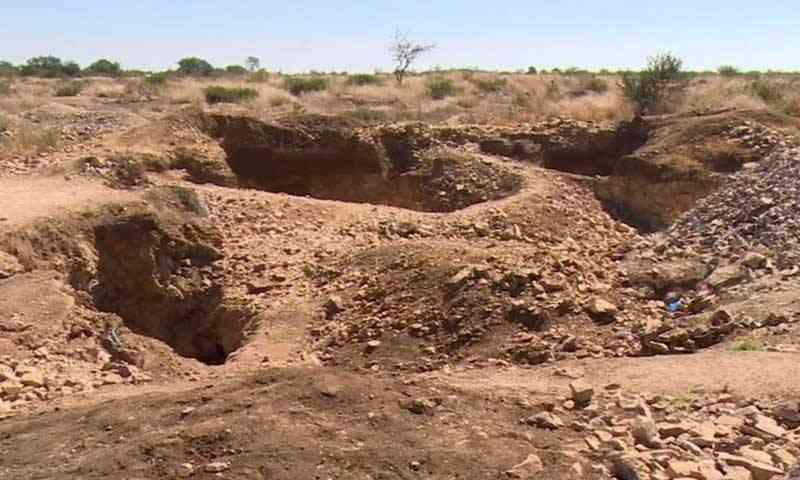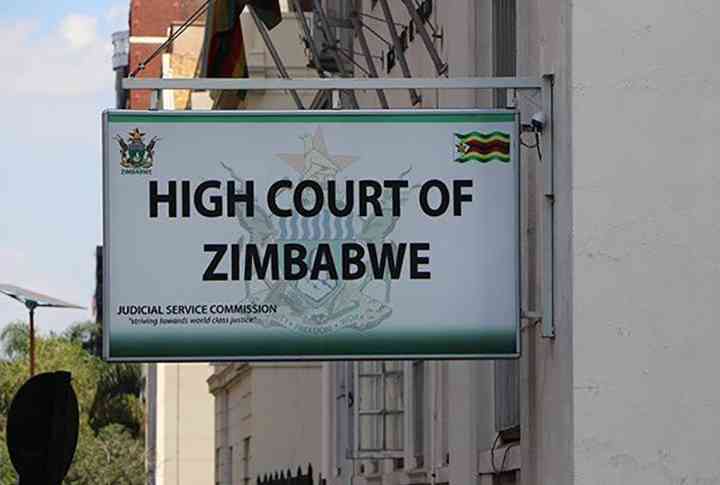
NEAR the entrance of Umfurudzi National Park, around 100km outside Harare, headgear left at a disused mine is among the signs that park authorities say are part of a by-gone era.
They battle to keep a balancing act even as the northern part of the park sees companies mining for black granite and gold with permission of a special exemption granted by the government.
While mining is prohibited in national parks under the Zimbabwe Parks and Wildlife Act, the government allows flexibility in areas it deems safari areas.
It’s a grey area given the complexities of regulating mining operations and balancing the detrimental effects to wildlife.
In the midst of all this, rangers in Umfurudzi often catch illegal gold panners along the rivers.
There have also been clashes between small-scale miners — the most prominent being in 2020 between John Maungwa and Chantelle Chikafu over a mine which was producing prolific kilogrammes of gold each day.
The matter spilled into the High Court and while the case for determination was for mining rights, it raised eyebrows that mining was taking place inside the park.
The mining wrangle sucked in Zimbabwe Miners Federation (ZMF) president Henrietta Rushwaya who claimed at the time, that her mining operations inside Umfurudzi Park were above board.
- Chamisa under fire over US$120K donation
- Mavhunga puts DeMbare into Chibuku quarterfinals
- Pension funds bet on Cabora Bassa oilfields
- Councils defy govt fire tender directive
Keep Reading
Rushwaya produced papers that showed that through Relm Mining, she had been mining in Umfurudzi since 2017 courtesy of a special grant given by the Mines ministry, which was renewed in 2019.
“As ZMF we will always protect the interests of our affiliates, of which Maungwa is,” she said then.
Rushwaya was recently acquitted of smuggling charges after being arrested carrying 6kg of gold in her handbag at the Robert Gabriel Mugabe International Airport en-route to Dubai. She denied the allegations telling the court that she had picked the wrong bag.
Turning back to the park, home to over 2 000 animals — of the big five being leopard, elephants and buffalo — the effects of gold panning contaminating river systems means that officials have had to think outside the box in their bid to conserve wildlife.
The park has approximately 82km of the Mazowe River on its eastern and southern boundaries.
“The Mazowe River is a threatened water resource for wildlife as it is heavily mined both commercially and for subsistence purposes,” the park notes in its brochure to tourists.
“It is heavily polluted with heavy metals and population pressure to the east of the river, through riverbank cultivation is creating silt on a large scale.”
Leakage of harzadous substances such as mercury into rivers creates potential disaster for wildlife.
It makes it tough work for rangers given that there are approximately 60 000 people living around or within the immediate proximity of the park, whose core activities are agriculture and mining.
Park authorities acknowledge that the pollution of the Mazowe River means that water availability and management is one of the prohibiting factors to the potential carrying capacity of wildlife in the park.
However, they say, since the inception of a joint venture between Zimbabwe Parks and Wildlife Management Authority and Unifreight Africa Ltd in 2010, the park has taken considerable steps to conserve and sustainably operate Umfurudzi National Park.
To that effect several dams have been created, and are currently central in reviving prime breeding areas for game birds and extended habitat for aquatic life currently under siege from pollution and habitat loss in the main river systems of the park.
“Since project inception in 2011, there have been 12 dams constructed which are approximately one to two hectares of water. The dams are for water supply to animal and bird species which traditionally had to migrate long distances from grazing grounds to find water,” says park manager Tawanda Chipere.
“The dams are spread throughout the southern and central sections of the park and are approximately 4km to 5km apart.”
“Limited water in the park also caused a concentration of wildlife and, therefore, poaching impact was high. With the wildlife being spread out over a large area and having access to water and not having to travel long distances, incidences of poaching have drastically reduced. Animal populations are now also filling the vacuums where animals previously did not reside.”
The park also bolstered conservation efforts through the introduction of 1 808 animals over a three-year period.
These included elands, rhinos, elephants, buffalos and warthogs that were tormented by poaching during the 1980s, when game counts were conducted by Cambridge University.
Turning to gold panning, rangers say there are implementing numerous efforts to dissuade gold panning along rivers in the park, although it is apparent that government support in providing more boots on the ground is needed to police these ills which stretch beyond the Park’s jurisdiction.
A report by Zimbabwe Environmental Law Association (Zela), argues that the escalation of the gold mining problems at Umfurudzi Park are in part, also a consequence Madziva Mine, a nickel mine in Shamva that closed in 2001 and was owned by Bindura Nickel Corporation.
“The former mining area is located near the Umfurudzi Game Park. The Madziva mining site now houses Madziva Teachers College. The mine owners left most of the mining equipment and the former mine workers argue that anyone can buy the equipment,” Zela said in its 2020 report.
“Closure of Madziva Mine left many workers stranded without any source of income, forcing many to go into illegal artisanal gold mining activities in the protected area of the Umfurudzi Game Park.”
In a separate recent report, regarding special exemption mining taking place north of the Park, Zela noted that “while there is no fence demarcating the conservation area from the mining area, there are no incidents of Human and Wildlife Conflict and poaching that have been recorded in the area.”
“Animals do not trespass to the mining area as they do not like the noise pollution that comes with mining operations,” Zela noted in a recent report.
“Most miners in the area do not process their ore on site and this reduces the use of hazardous substances such as mercury. For example, the Sirenda Suraj Mine processes its ore in Mtawatawa area.
“The mining companies are encouraged to reclaim the mined areas. This practice is closely monitored by ZimParks to ensure that no open pits are left which can be a hazard to both animals and humans in the area,” Zela said.
In the absence of a scientific study, the chronic effects on wildlife as a result of mining around the park and the contamination of Mazowe River remains unclear.
Observers maintain that in order to preserve Zimbabwe’s vast wildlife, unique vegetation and eye-catching landscapes, it is incumbent on policymakers to harmonise laws that prohibit mining in ecologically sensitive areas.
“Currently, the Mines Act gets preference over other laws such as the Water Act or the Environment Management Act. Mining rights trump everything. The mining sector itself has its own challenges due to lack of transparency and accountability,” said a government official who declined to be named fearing reprisal.
Though managing wildlife sanctuaries close to mining operations appear insurmountable, Umfurudzi officials say they are taking steps to conserve and sustainably operate the area.
For now, the park continues to battle to unshackle itself from a by-gone era.











